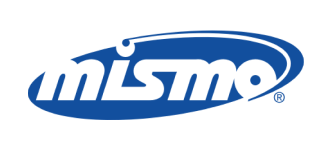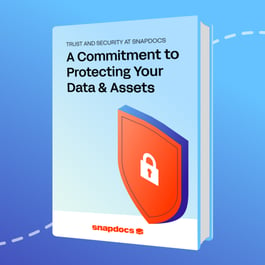Welcome to Mortgage Industry Trailblazers, our ongoing interview series with innovative, forward-thinking professionals in the mortgage industry, hosted by Camelia Martin, Snapdocs’ Vice President of Industry and Regulatory Affairs. The series will look at the problems and solutions the industry faces through the eyes of some of its top leaders.
There’s no bigger advocate for eMortgage adoption than Mike Cafferky. Seeing the evolution of this industry from all perspectives in his 30+ years at Fannie Mae, Mike is now a principal and leads all eMortgage and digital closing efforts at the GSE. We sat down with Mike to discuss how the industry can continue its evolution toward digital processes, how it has changed over the past decade, and why continued education and industry collaboration are instrumental in enhancing the scalability of digital closings.
Below is a transcript of our conversation.
Camelia Martin: It's always interesting to hear how someone ended up in their role today. How would you describe your position as principal of eMortgage at Fannie Mae?
Mike Cafferky: I've been at Fannie Mae for 30+ years and feel I have the best job. It's easy to be passionate about the mission of working with housing partners to help people get into homes!
I've had the chance to work in many different areas of the firm and spent the last five leading eMortgages and digital closings. I focus on managing and evolving the technology and standards that form the basis for digital closings and engaging with various industry partners like MISMO, MERS, and others to build a viable ecosystem for eMortgages and remove barriers to adoption. There's been a real thirst recently for information and guidance, and Fannie Mae is just one of the many parties that help meet that need.
Camelia Martin: I love the popular meme that asks, “What do my parents think I do?” vs. “What do my friends think? I do?” vs. “What do I actually do?” If I were to take a snapshot of your day when you first got involved in digital closings compared to today, what differences or similarities would I notice?
Mike Cafferky: We've seen the conversation shift from discussions around adoption and obstacles to a real focus on real scalability. In the early days, there were many roads for lenders looking to originate and sell mortgages, and many investors, servicers, funding providers, and technology partners weren't ready to support. There was also a considerable education and information void for lenders trying to implement a plan.
Thankfully, we're in a completely different place right now. Many warehouse banks and Federal Home Loan Banks have stepped in and supported funding for eNotes. Organizations like MISMO, ALTA, and MERS are leading tremendous educational efforts, and we’re also seeing a real focus from the technology partners to support and help educate customers.
Many adoption issues have been resolved, and it's a more straightforward pathway for customers to make this transition to eMortgages. Early lenders did a few loans as eNotes, but they weren’t ready to move forward in a significant way. Nowadays, we're seeing lenders come to the table more knowledgeable on the impacts and value eNotes, and digital closings offer. They're better prepared, more committed to moving forward, and have fewer obstacles in their way.
Camelia Martin: That's consistent with what we see as well. It's gone from, “How do I do this?” to “How do I do more of these?” and “How do I get all of the benefits, efficiencies, and ROI?” which is effectively, “How do I scale and take full advantage of this investment in digitizing closings?” The barriers to eMortgage adoption are fewer and different from ten or even five years ago. What are the current barriers, and how do you see the industry moving past them?
Mike Cafferky: The good news is that with the rapidly expanding industry participation, particularly with technology partners supporting eNotes, hybrid closings with eNotes are a real possibility and a logical first step for most lenders.
There is so much value in the note being electronic. That's been a big focus for Fannie Mae and also the focus of a recently published whitepaper. The obstacles are really few and far between.
The challenge is more about scaling new technology and processes and the obstacles, particularly moving to an entirely paperless closing. Those are mainly due to the state restrictions on eNotarization, county recording, investor requirements, or limitations. Fortunately, several industry groups, including MBA, ALTA, PRIA, MERS, and MISMO, have been leading the charge over the past few years, and we’re starting to see significant progress!
Camelia Martin: I agree. Interestingly, while all of these policies are moving in the right direction, it can be challenging for a lender to stay informed on how digital they can be and how they can scale their digital closings in this environment.
We’re investing quite a bit in giving more transparency into the e-eligibility of loans alongside MISMO and the others you described. (Editor's note: Snapdocs and MISMO recently announced an industry-first e-Eligibility Exchange.) I think this transparency will go a long way in giving lenders the confidence they need to feel good about closing loans digitally.
Changing topics slightly, you spoke about education as a big part of your current role at Fannie Mae. To the many lenders making this transition, how would you describe your position in helping lenders transition to digital closings and eMortgages?
Mike Cafferky: Great question. Our role has changed over time, as others have stepped in to support adoption and education and help our customers make this transition. We want to be a trusted source of information. A big part is helping them understand the value and impact, particularly concerning eNotes, and prepare for that change.
We have significant experience and want to give our customers the benefit of our expertise and best practices. Our work with technology partners like Snapdocs makes it easier for our customers to onboard and be approved for eNotes in a simple, streamlined fashion. This work has paid off, and we're starting to see customers that are already knowledgeable come to us, whereas not long ago, we had to hold their hands. They're now coming to us already well-informed and ready to implement. It's been a tremendous change to see!
Our approach at Fannie Mae also maps to that shift. We have really knowledgeable people on our team who are here to work very closely with our vendors. If they want us to be part of their other projects and be, you know, intimately involved, we're happy to do that. Or they come to us ready to be approved because they work closely with the lender, then that's great as well. We're prepared to support them in any fashion they want to make this transition.
Camelia Martin: What would you say if you had to describe key differences between a lender that's been successful in the transition with digital mortgages versus one that hasn't? What are some of those differences?
Mike Cafferky: I've certainly had the opportunity to work with lenders that fall into both categories.
The ones with a very high-level executive commitment to the project tend to be very successful in their implementation. Those often include a champion and also a broad organizational commitment. Many different pieces of the puzzle come into play, and many other folks in the organization will be impacted. The more they're involved in the process and bought into the success, the higher the likelihood that the organization will succeed.
I’ve also seen companies make hybrid closings the default process, with the option to opt out. We see lenders have much more success driving and scaling with that approach. The most successful lenders are the ones who are really taking advantage of the power of electronic documents and revisiting rather than “electronifying” the current process. They're looking at the process holistically and then re-engineering it with technology and the borrower in mind.
Camelia Martin: Yes, there's a difference between eSigning closing documents and truly digitizing your closing processes – which includes reimagining what the experience can be for everyone involved in the closing process. We’ve also seen tremendous success when lenders come to the table with strong commitment from the top and a willingness to embrace the change management that lays the foundation for true scale. We meet lenders where they are in this journey and strongly encourage them to start with hybrids to lay the foundation for eNotes.
Mike Cafferky: That is the primary advice that I give to lenders. Years ago, many lenders began to look at this and realize they couldn't go paperless right away because so many other issues were already in the way. They didn’t want to start with a hybrid process, so they just didn’t start.
We're now seeing lenders drive so much value from hybrid processes. The time to get started on eClosings is now, and lenders should begin with what they can control. A hybrid process is something they have a great deal of control over. They don't need to go paperless immediately but can stick their toe in the water.
Camelia Martin: You have been involved with eMortgages almost since their inception; if you could go back in time, is there something you would like to change?
Mike Cafferky: I would LOVE to change the terminology the industry has adopted in which loans with eNotes are referred to as eMortgages – even if the “Mortgage” document is signed on paper. This continues to confuse partners looking at eNotes, which gets unnecessarily wrapped up in conversations about electronic notarization and recording of the mortgage. Instead of “eMortgages” I like “eNotes” and lots of them!



















